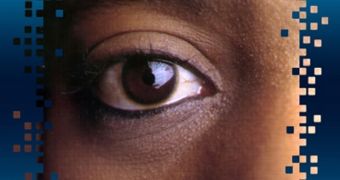Researchers were recently able to gain more insight into how the human brain processes and summarizes the wealth of impulses sent to it by the retina. They were even able to develop a new mathematical model that allows them to explain some peculiarities pertaining to vision.
This simulation also shows certain information processing patterns in the brain, which further enable experts to predict certain strange aspects related to the way we perceive things we see.
According to scientists, it all begins in the retina, the layer of cells at the back of the eye that converts photons into electrochemical impulses. More than 100 million cells are involved in producing the data.
All this vast amount of information contains a massive wealth of detail, that the brain simply cannot process in full, despite the 100+ billion neurons it has at its disposal.
Processes such as object recognition, gauging size and distance, and calculating the trajectory of a moving object are the most complex and computationally-intensive vision-related tasks.
For many years, experts have proposed tat the brain summarizes the retinal data it receives following certain algorithms that reduce the amount of data perceived consciously based on certain algorithms.
But expert Ruth Rosenholtz, Ph.D, a principle Research scientist of visual cognition at the Massachusetts Institute of Technology (MIT) Department of Brain and Cognitive Sciences, recently presented a paper that had an entirely different opinion on the matter.
Speaking yesterday, January 27, at the Human Vision and Electronic Imaging conference organized in Seattle, Washington, by the Society of Photo-Optical Instrumentation Engineers, she said that the new model she developed throws a new perspective on how brain processes sight.
By using this approach, the MIT expert was able to predict certain types of failures that the human vision system is prone to make when processing images. But the real issue with vision studies is that no one knows what type of elements the brain focuses on when making sense of the data it gets.
Developing models such as RosenHoltz's represents a suitable approach to conducting this type of investigation, say analysts who were not a part of the new research efforts.
The researcher introduced a wide variety of factors in the computer model, that her artificial vision system saw, but other vision researchers don't believe that the human cortex can keep track of thousands of cues at the same time.
Determining the ones that play the most important role in vision is the main purpose of studies being conducted in this field of research.

 14 DAY TRIAL //
14 DAY TRIAL //